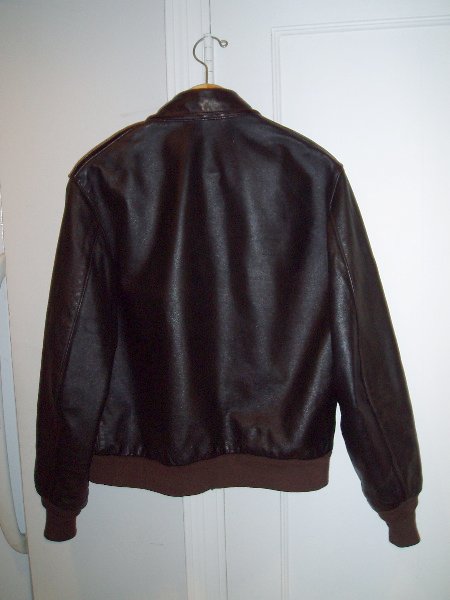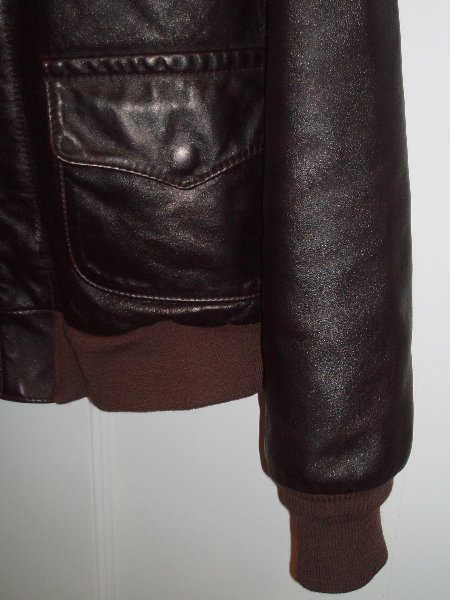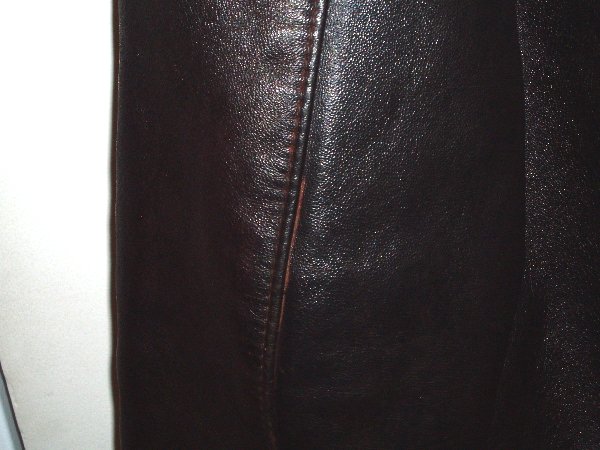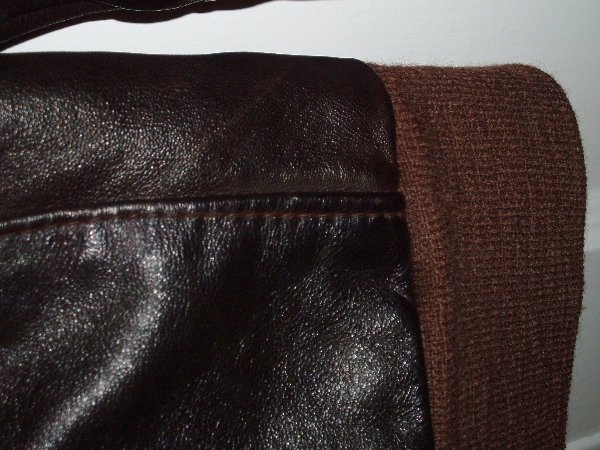Fletch
I'll Lock Up
- Messages
- 8,865
- Location
- Iowa - The Land That Stuff Forgot
An abortive stitch-hole filling experiment involving a cheap goatskin jacket last summer left me with an almost full bottle of Kelly's Cobler seal brown leather dye. I recently got the courage up to apply said dye to my Willis & Geiger horsehide A-2, which suffers from an icky, sheeny acrylic finish in an unappealing hazelnut brown.
Here are a few snaps from the process, now about half complete, after lots of stained fingers and a kitchen that smelled like a dyeworks.
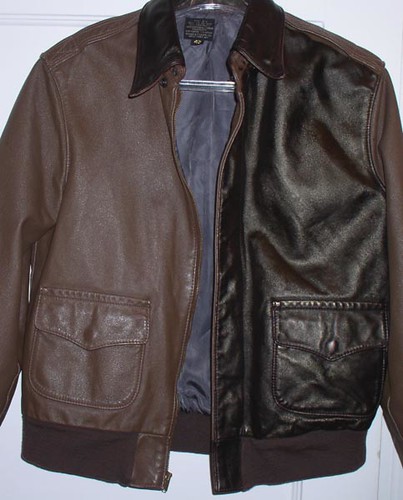
One front panel with one coat. It was a bit streaky in places, so I went for two coats.

Original finish, close up.
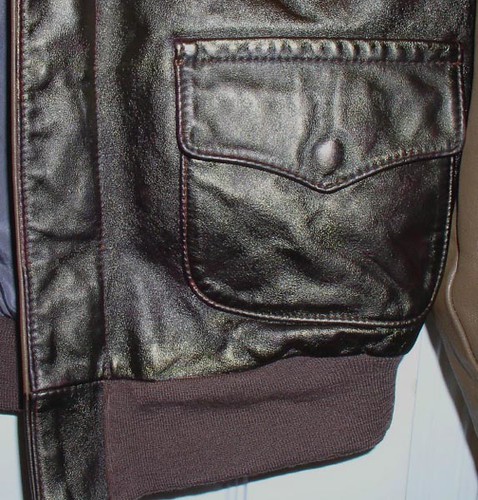
One coat of seal.

Entire front with two coats. I figured I'd better do all I could of the front out of one dye bottle. 3 oz covered all but one strip of the right front sleeve panel. In case the next bottle isn't quite the same shade, it'll be a lot less noticeable front/back than it would be left/right.
Some comments on masking:
The seams where leather rolls over knit (ie: cuffs) are easiest to mask. I've been using waterproof first aid tape, which tucks nicely into the channel between the hide and the knit.
Where the knit lies higher than the leather, you have a trickier problem. The tape won't stay in the channel and bleed thru can occur, as seen at the left edge of the knit in this lower inside zip panel.

The lining fabric cannot be masked off neatly at the seam, as evident at the top of the panel. Should I do another dye job, I plan to mask off a few mm of leather and leave it undyed. Here's what happened inside the collar seam.
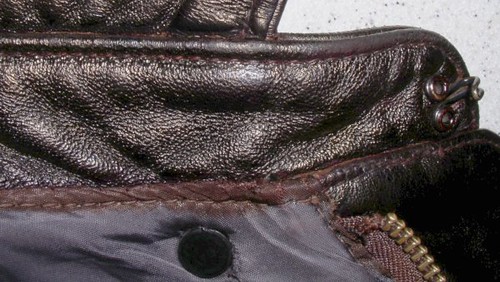
If the results of the dyeing please me enough, I may have the jacket relined using some tobacco colored calico I have on hand.
I left the edge of the right zipper seam undyed, because it's not conspicuous at all.
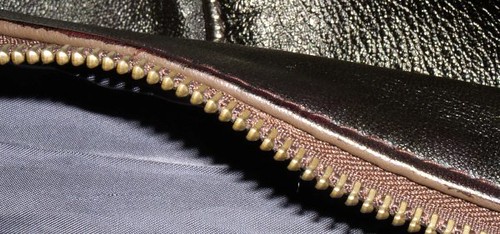
At this point, it's back to the shoe repair for more dye and a new dauber. Believe it or not, I did everything you see here with ONE of these.

When it's all done I'm going to rub it down with a hard surfaced cloth to take down the sheen. This should also mask some minor overlaps and variations in dye absorption here and there.
After that I'll rub in a coat of cream polish and she'll be ready for a test flight.
Here are a few snaps from the process, now about half complete, after lots of stained fingers and a kitchen that smelled like a dyeworks.

One front panel with one coat. It was a bit streaky in places, so I went for two coats.

Original finish, close up.

One coat of seal.

Entire front with two coats. I figured I'd better do all I could of the front out of one dye bottle. 3 oz covered all but one strip of the right front sleeve panel. In case the next bottle isn't quite the same shade, it'll be a lot less noticeable front/back than it would be left/right.
Some comments on masking:
The seams where leather rolls over knit (ie: cuffs) are easiest to mask. I've been using waterproof first aid tape, which tucks nicely into the channel between the hide and the knit.
Where the knit lies higher than the leather, you have a trickier problem. The tape won't stay in the channel and bleed thru can occur, as seen at the left edge of the knit in this lower inside zip panel.

The lining fabric cannot be masked off neatly at the seam, as evident at the top of the panel. Should I do another dye job, I plan to mask off a few mm of leather and leave it undyed. Here's what happened inside the collar seam.

If the results of the dyeing please me enough, I may have the jacket relined using some tobacco colored calico I have on hand.
I left the edge of the right zipper seam undyed, because it's not conspicuous at all.

At this point, it's back to the shoe repair for more dye and a new dauber. Believe it or not, I did everything you see here with ONE of these.
When it's all done I'm going to rub it down with a hard surfaced cloth to take down the sheen. This should also mask some minor overlaps and variations in dye absorption here and there.
After that I'll rub in a coat of cream polish and she'll be ready for a test flight.




